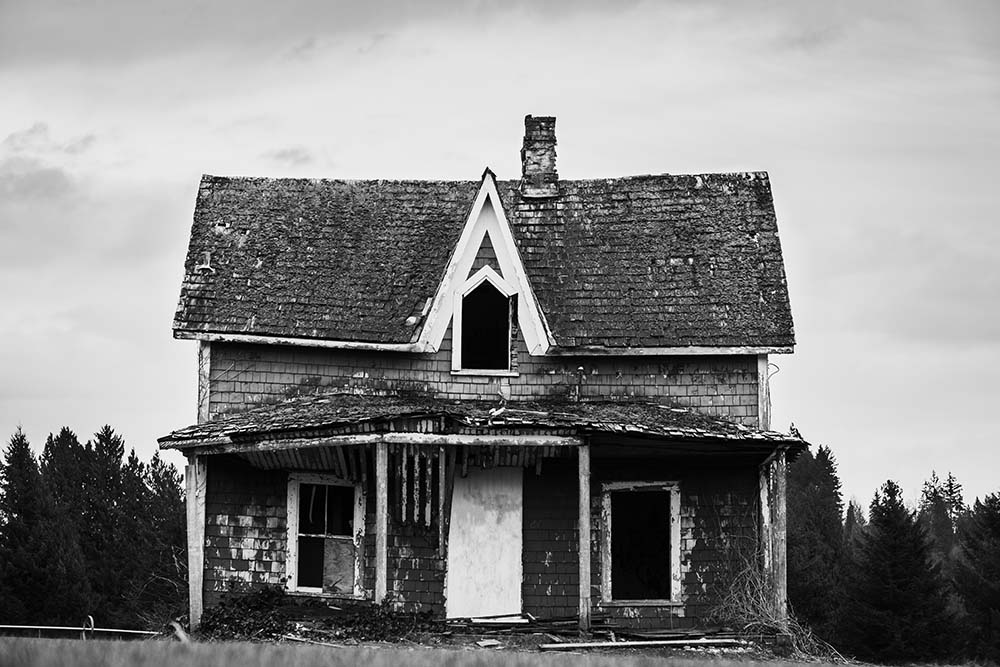
31 May Signs A House Will Collapse
Ok, let’s imagine that the house has not collapsed yet. How can we prevent such a disaster from happening? What are the warning signs? Below is a list of potential signs to consider looking for right away:
Bowing or uneven floors separated from the wall
- Sunken, heaved, or sloped areas on floors inside the building
- Bouncy feeling floors
- Wall moldings out-of-place
- Cracked or crumbling concrete
- Sinking earth around the house
- Interior and exterior cracks
- Damp crawl space or basement
- Sloping floors
- Bending or uneven door frames
- Chimney cracks
First and foremost, always consult with a professional contractor or basement specialist before assuming there are for certain serious damages or seeking solutions to implement.
Cracks in walls, gaps between walls and floors could also be indicators that a structure is about to collapse. Certain cracks could have several factors that cause the home’s settling whether it is because of the foundation’s shifting or changes in the climate. Either way, remember to always pay attention and take notes of any cracks, as they could become more significant with time, ultimately weakening the home’s structure, and inevitably leading to its collapse.
If there are doors and windows that stick or refuse to open, this too may be an indicator that the house could be in danger of collapse, possibly due to the house settling or the frame of the home shifting. If the doors and windows cannot move freely, checking for other signs of structural damage is imperative. Take notes here too and contact a pro immediately.
Should you see bowed walls or noticeable bulges, again, this is another sign of a house about to collapse. Additionally, this can happen when the home’s structure is weakened, or the foundation is settling or shifting. Again, contact a professional immediately if anything unusual is discovered.
Sagging or uneven floors also signify a house is potentially about to collapse, most likely due to the foundation shifting or the home settling. Check for any unevenness in the floors and bouncing or springing when walking on them.
Leaks in the roof and walls are another sign and can be caused by various factors, such as poor construction, inadequate drainage, or even foundation movement. Any leaks should be taken seriously and addressed immediately.
Should there be a legitimate concern for issues with sinking or settling slabs, mud jacking is a technique that’s been around for decades but must be done by a professional. Do not try this on your own.
Mudjacking is an economical and effective way to raise concrete, as an alternative to concrete replacement, as well as to repair and stabilize foundations and structures. It is a non-invasive process that can be completed quickly with minimal disruption to the surrounding environment. It can also help prevent further damage to the foundation or structure, improve its stability, and extend its lifespan.
If you require concrete raising or leveling around your home or business, consider our SAS mudjacking (concrete lifting system), which is an effective and budget-friendly option.
What would cause a house to collapse?
Excessive weight placed on a faulty structure will cause a building to collapse. Heavy machinery – during construction or demolition, the weight of heavy machinery can cause the building to collapse. A mistake by a worker operating heavy machinery can cause structural damage that contributes to the building’s collapse.
If the ceilings are sagging or the walls are bulging, it may be a sign that a house was built poorly and is about to collapse due to the structure of the home shifting or the foundation settling. Contact a professional immediately to assess the situation.
Another sign the house may not have been built properly or has the solid potential for collapse is if the walls are cracking or the ceilings are drooping. Again, it could be due to the home’s shifting structure or the foundation settling. Check for any cracks in the walls and ceilings and contact a professional if anything unusual is noticed.
If the house is shaking or vibrating, it may be a sign the house might collapse. And could be due to factors such as an earthquake, poor construction, or even foundation movement.
Poor maintenance can also cause a house to collapse. For example, if the foundation of a home is not maintained, it can easily cause a collapse. The same goes for the roofing and other structural components, which can weaken the integrity and contribute to a building’s collapse if not maintained.
Natural disasters like earthquakes and floods can cause buildings to collapse, as can strong winds and heavy snowfall. In these cases, it is essential to look at the building and assess the damage with the help of a professional to determine a plan of action for repairing or rebuilding the home.
Can your house collapse from foundation issues?
Of course, and as we have been saying, yes, foundation issues could cause a home to collapse. Serious foundation issues will put a home’s stability at a very high risk of collapsing, hence why, if a foundation wall collapses, a structural engineer or a highly qualified contractor must assess the damage.
Do not do this essential project on your own. But, again, should there be a legitimate concern for issues with a sinking foundation, mud jacking could be an optimal solution.
The settling and shifting of foundations can often be caused by building a structure on expanding or contracting soil due to freezing or holding water, improperly compacted fill soils, or poor landscaping around the home or building’s foundation.
Whatever the cause, this settlement can ruin your home or commercial building’s value. Whether you are experiencing settling foundations, bowed or cracked foundation walls, cracks in drywall, sagging floor joists, or having a home sitting on unsuitable foundation soils, SAS Services, Inc. can solve your foundation problems.
Signs a house will collapse
In conclusion, it is a valuable decision to pay close attention to the possible warning signs that could potentially cause a building to collapse. Bowed or uneven floors, sticking doors and windows, bulging walls, sagging floors, and cracks in the walls and ceilings could be indicators as well.
In these cases, it is so very essential to look at the building and assess the damage with a professional to determine a plan of action for repairing or rebuilding the home. Concrete leveling is an alternative, cost-effective, and efficient way to re


No Comments